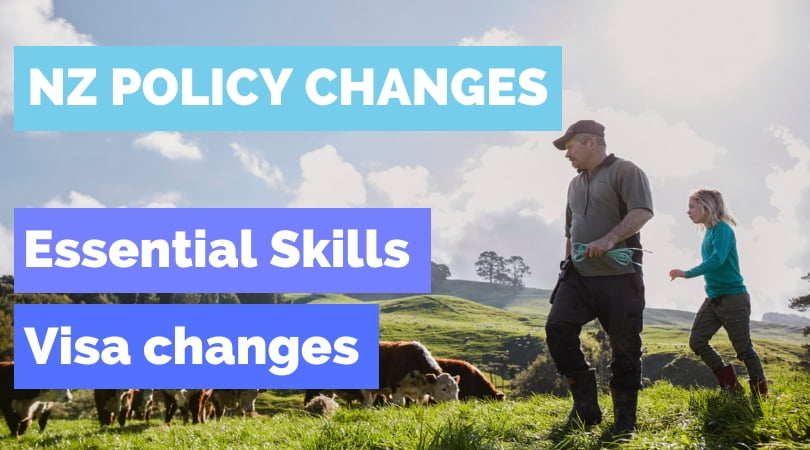Immigration New Zealand is making changes to the way they decide on the duration (currency) of certain work visas.
Changes to Essential Skills work visas
Essential Skills work visas are based on securing a skilled job offer from a New Zealand employer. Amongst other things, this particular category of work visas is meant to incentivise the development of a highly skilled workforce, high quality jobs and workplaces, and high value industries while not displacing New Zealanders from employment opportunities or hindering improvements to wages or working conditions.
When is this implemented
These policy changes will be valid for applications submitted on or after 27 July 2020. Applications submitted before that date, and decided after that date, will be assessed under the policy in place at the time of lodgement.

There are three skill levels to this category, which impact the duration of a visa, and the qualification/work experience required to be deemed competent. To determine the skill level, INZ has been using a combination of a job’s Australian and New Zealand Standard Classification of Occupations (ANZSCO) skill level and the salary to assess if someone is low, mid or high skilled.
From 27 July 2020, the skill level will be solely determined by a median-wage threshold as indicating whether an applicant is:
- at or above median wage - higher skilled
- below median wage - lower skilled
The current median wage in New Zealand is NZD$25.50 per hour and is revised every year in November.
Lower-skilled visas will be granted for 6 months and can be renewed to a total of 3 years, until a 12 months stand down period applies before a further low-skilled visa application can be approved.
| Below median wage | At or above median wage | |
| Labour market test | Employer must seek a Skills Match report from the Ministry of Social Development | Employer must make genuine attempts to hire New Zealanders, including advertising for the role and considering New Zealanders |
| Maximum visa duration | 6 months for each low-skilled visa until 10 January 2022, then 12 months for each low-skilled visa.
Total duration 3 years before a 12 months stand down period starts |
Each visa granted to 3 years.
No maximum duration. Ability to seek residence under the Skilled Migrant Category as a separate process. |
| Family visa entitlements | Partner of a worker can seek a visitor visa (no work rights) on the basis of their relationship.
Partner can seek a work visa in their own right if they secure a role. Dependent child(ren) of a worker can seek a Dependent Child Student visa (subject to meeting a minimum family income threshold) |
Worker can support their partner for an open work visa.
Worker can support their dependent children for a dependent child student visa (subject to meeting a minimum family income threshold) |
A positive change for families
Until these policy changes, dependent children of low-skilled work visa holders did not have the right to study in New Zealand. From 27 July, these children can seek dependent children student visas, and go to public schools fee free. Partners, however, still cannot have work rights based on their relationship with the worker. However, they can seek a work visa in their own right if they secure a role.
Requirements for employers
Employers willing to employ a foreign national below median wage can do so, however, they will need to seek feedback from the Ministry of Social Development (MSD) in the form of a Skills Match Report (SMR) as to the current unavailability of New Zealanders to fill the role.
Employers willing to employ a migrant at or above median wage, still need to provide evidence that they have made genuine attempts to hire New Zealanders as has been the case historically.

